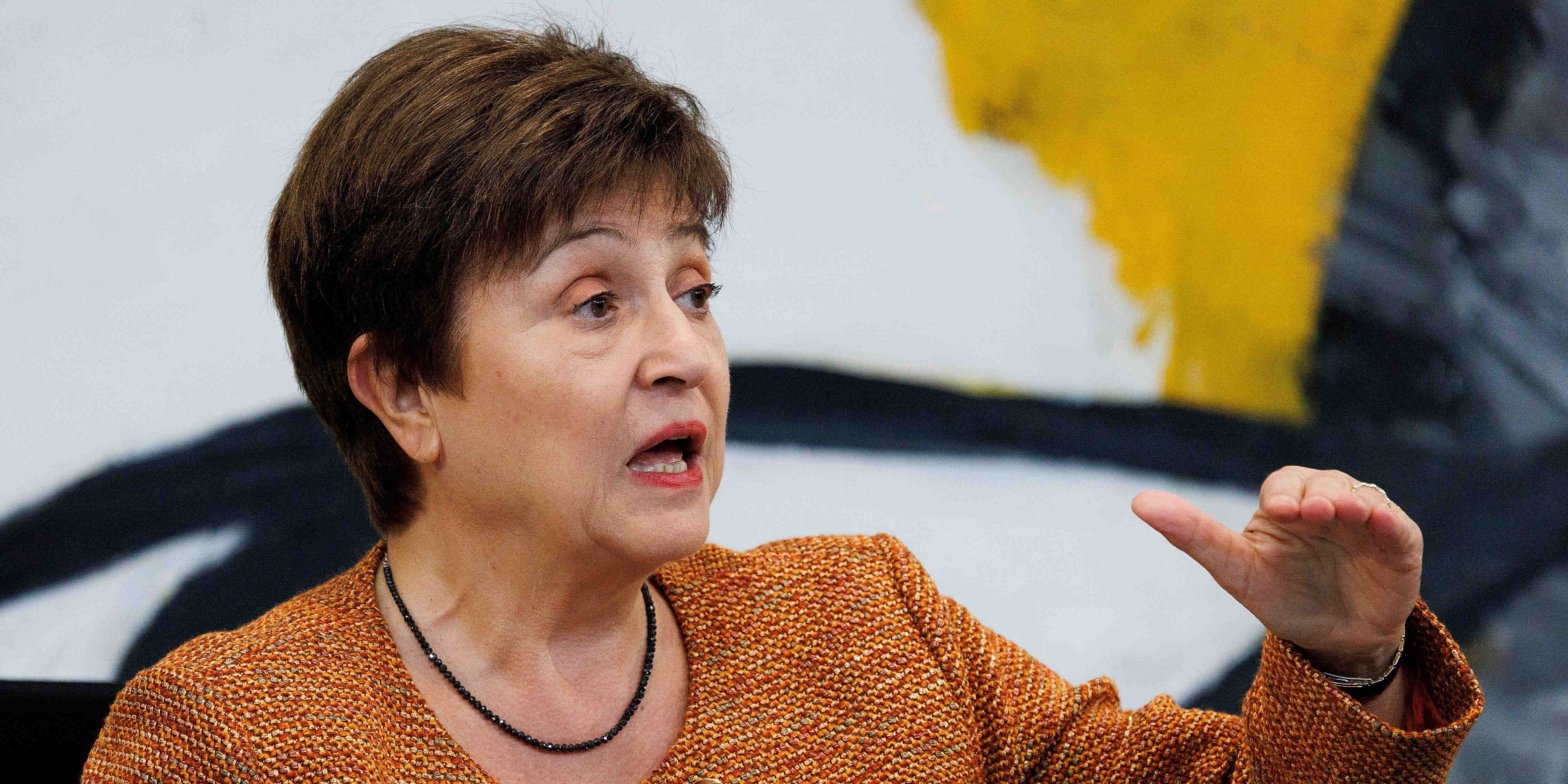The global economy is looking at its slowest growth in three decades over the next 5 years, the IMF head said Thursday. Higher interest rates as central banks battle hot inflation are weighing on demand in advanced economies. The world’s GDP should remain around 3%, the lowest medium-term growth forecast since 1990. Loading Something is loading.
Thanks for signing up!
Access your favorite topics in a personalized feed while you’re on the go.
The global economy over the next five years will expand at its weakest pace in more than 30 years, with advanced economies set for sluggish activity in the face of higher interest rates, the head of the International Monetary Fund said Thursday.
The world’s gross domestic product should hover around 3%, the lowest medium-term growth forecast since 1990, IMF Managing Director Kristalina Georgieva said in a speech in Washington.
That rate would run well below the 3.8% average from the past two decades.
In 2023, it foresees growth at less than less than 3%. The IMF in January projected 2.9% growth for this year. The economy grew by 3.4% in 2022. The IMF will release its World Economic Outlook next week.
The bleak growth outlook comes even as labor markets have been “surprisingly resilient,” consumer spending has been strong in most advanced economies, and China is reopening its economy.
Emerging economies in Asia serve as an especially “bright spot” for momentum in growth. The IMF expects India and China in 2023 to account for half of worldwide growth.
“So far, we have proven to be resilient climbers,” she said. “But others face a steeper climb. Economic activity is slowing in the United States and the Euro Area, where higher interest rates weigh on demand,” she said, adding that about 90% advanced economies should see a decline in their growth rate this year.
The Federal Reserve, the European Central Bank and the Bank of England are among the central banks that have jacked up interest rates to combat decades-high inflation in their respective economies. The benchmark US interest rate stands at 4.75%-5% after starting from zero-0.25% in March 2022.
While higher interest rates are slicing into demand, central banks must continue fighting inflation and safeguarding financial stability, said Georgieva. Core inflation is still “stubbornly high” in part because many countries have tight labor markets.
“There cannot be robust growth without price stability—nor without financial stability. And these days, both need the attention of policymakers,” she said.
Battling inflation has become “more complex” due to the stress hitting the banking sectors in the US and Switzerland. Silicon Valley Bank and Signature Bank failed and were seized last month by US regulators and troubled lender Credit Suisse underwent an emergency buyout by UBS with the assistance of Swiss regulators.
The shakeups were reminders that it’s difficult to rapidly switch from a prolonged period of low-interest rates and ample liquidity to much higher rates and scarcer liquidity, the IMF chief said.
